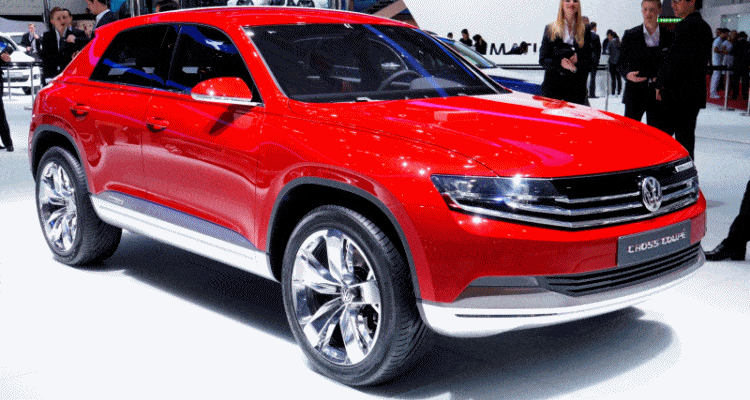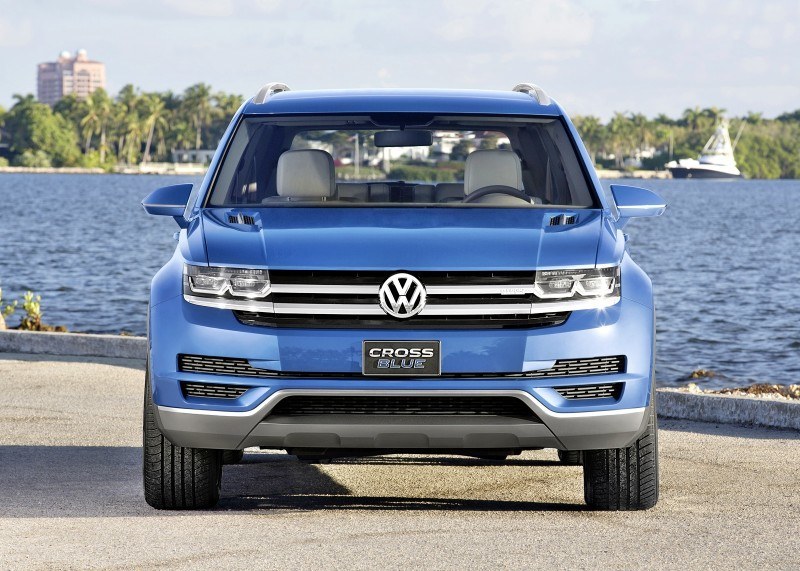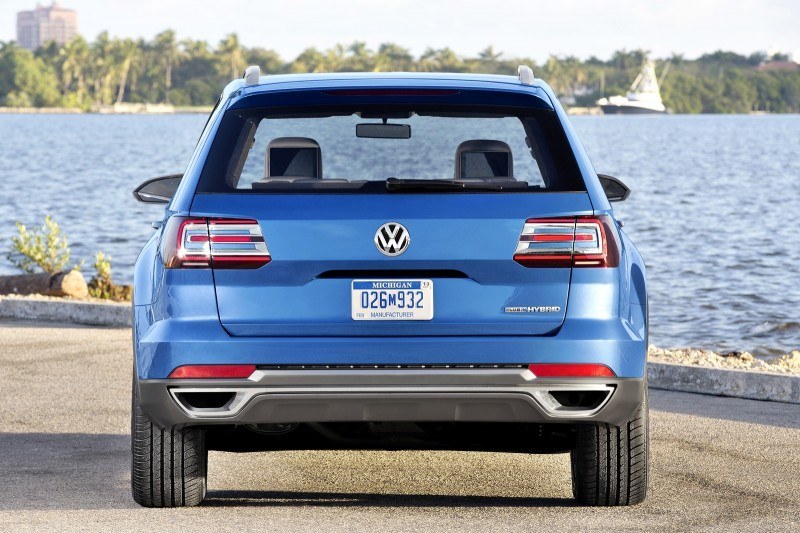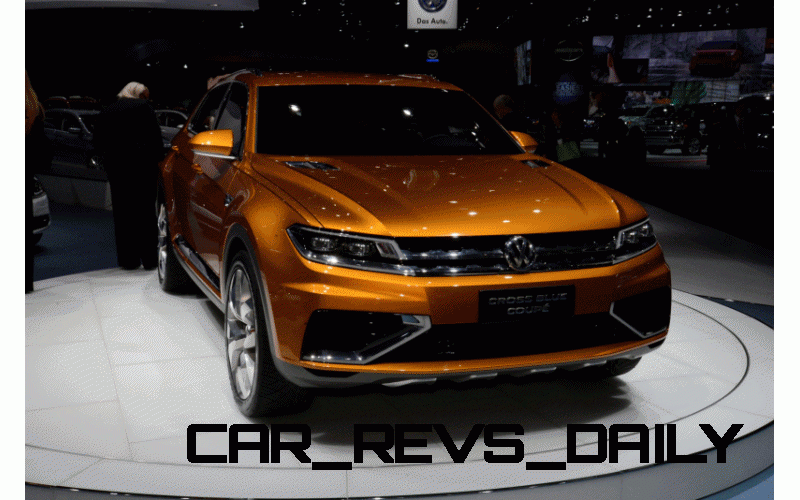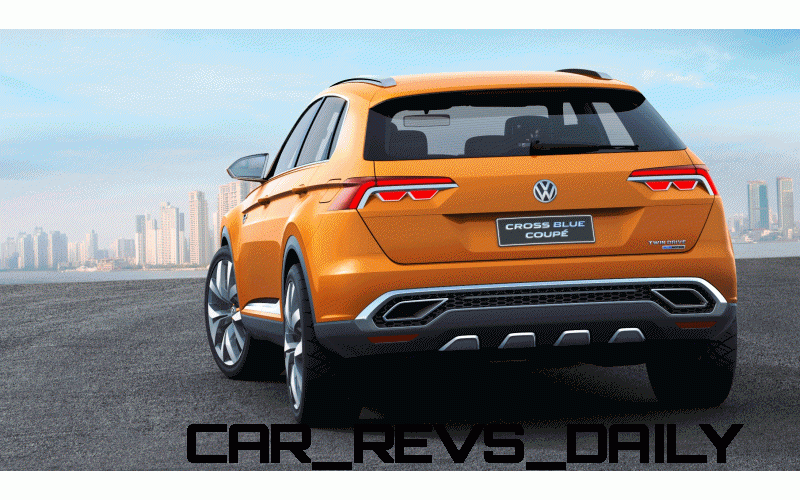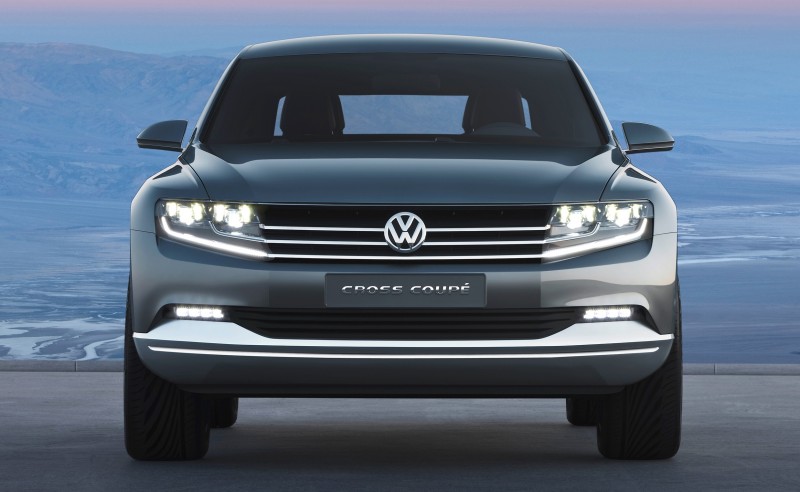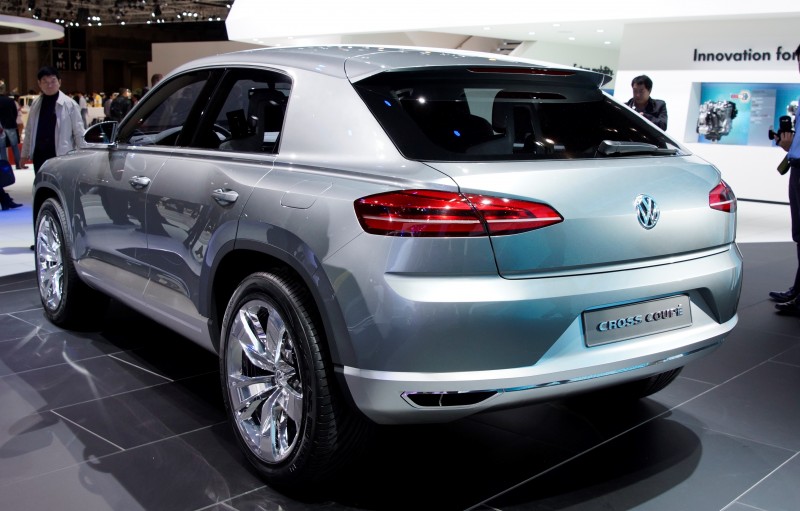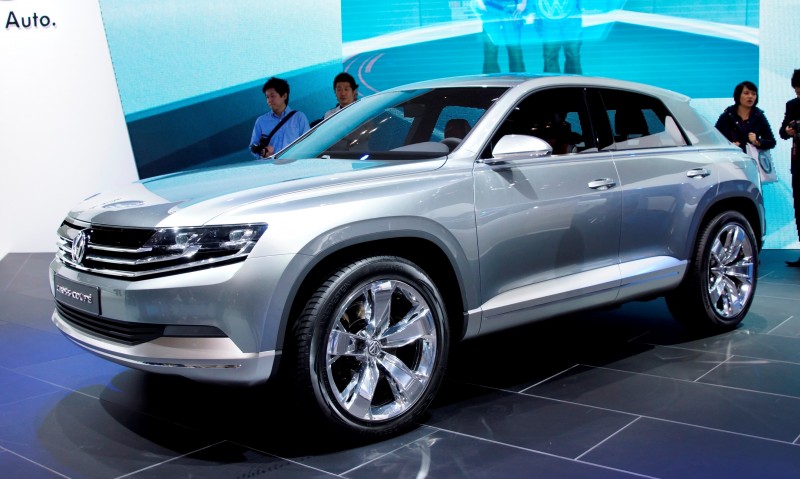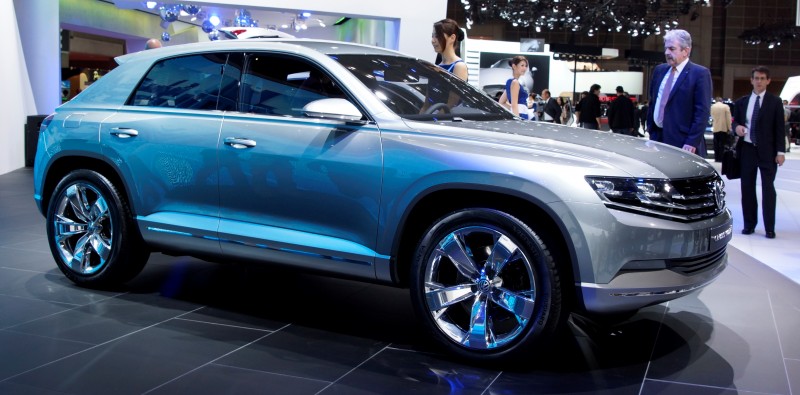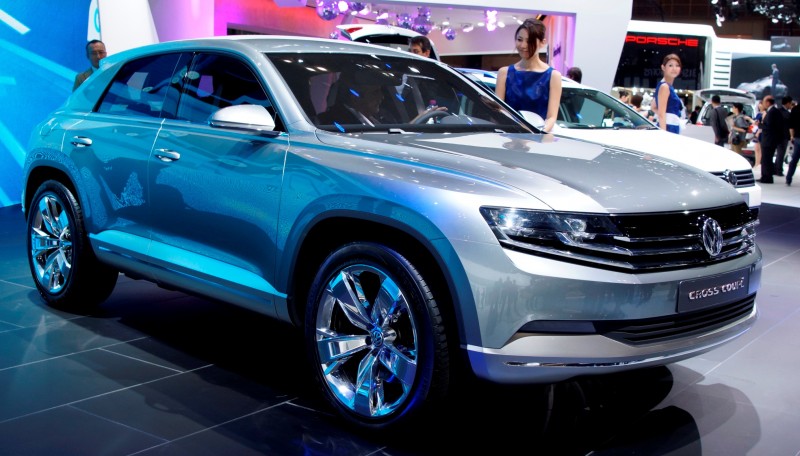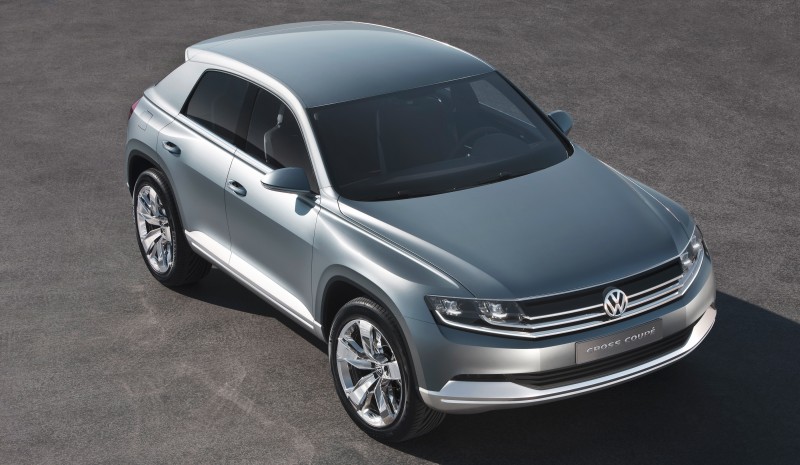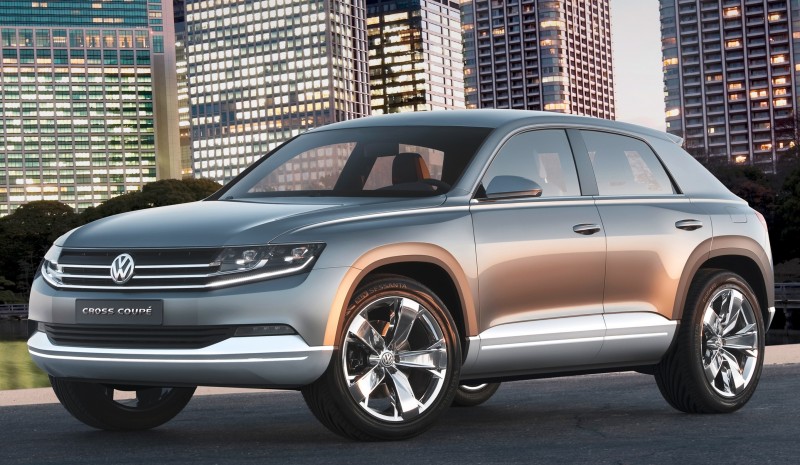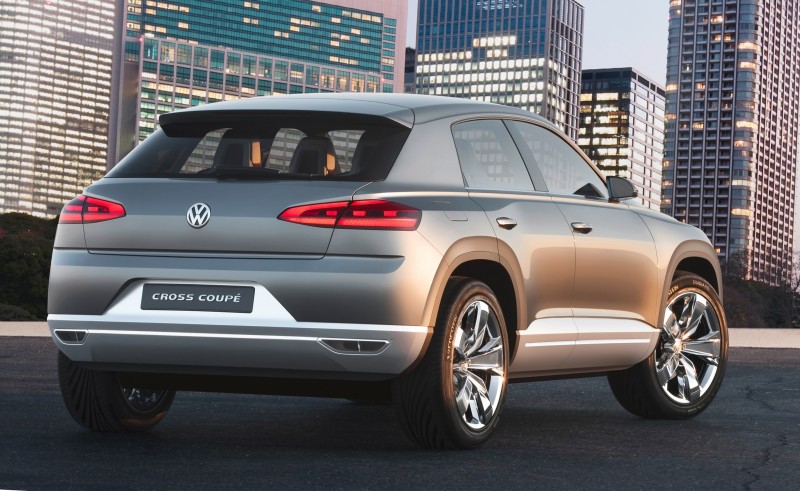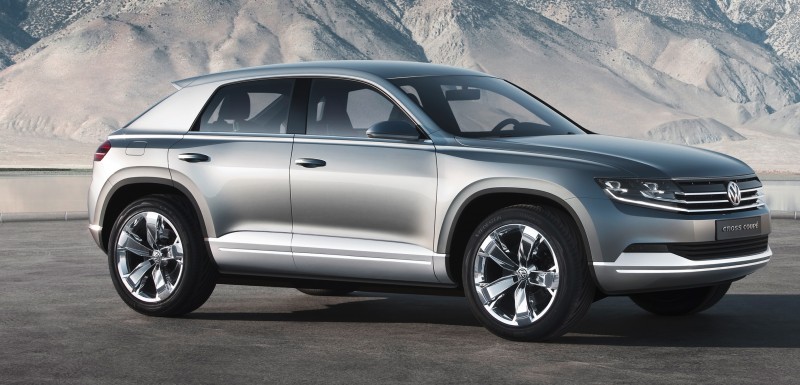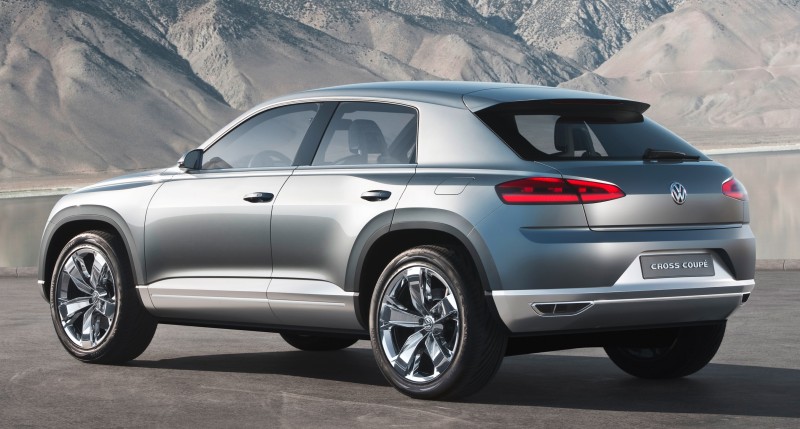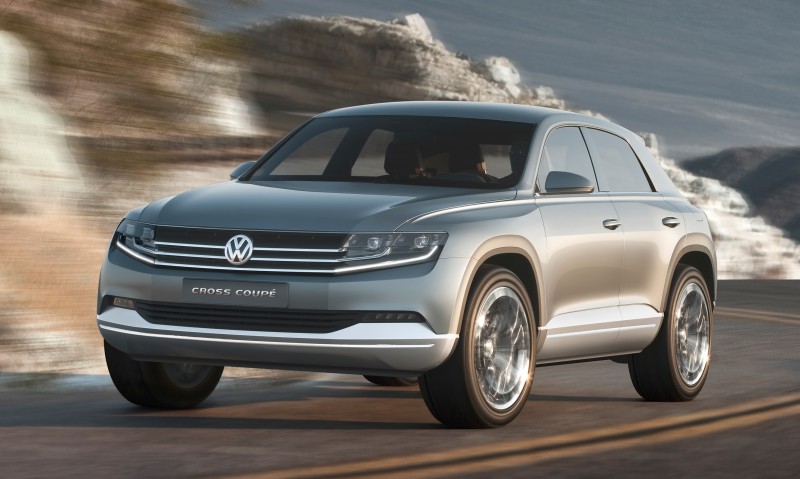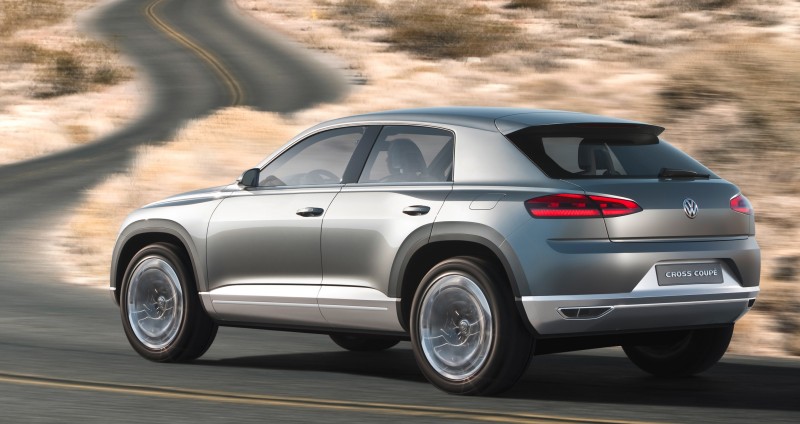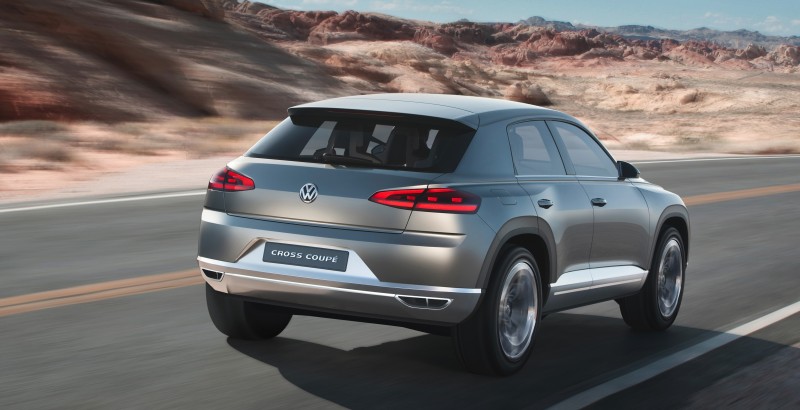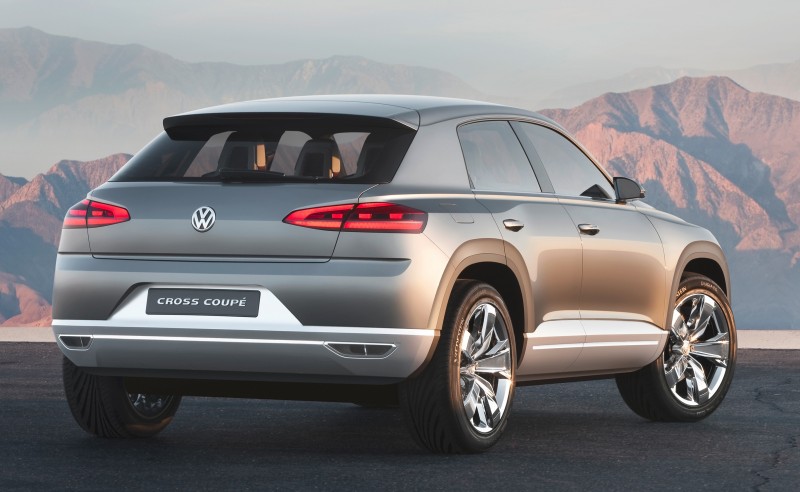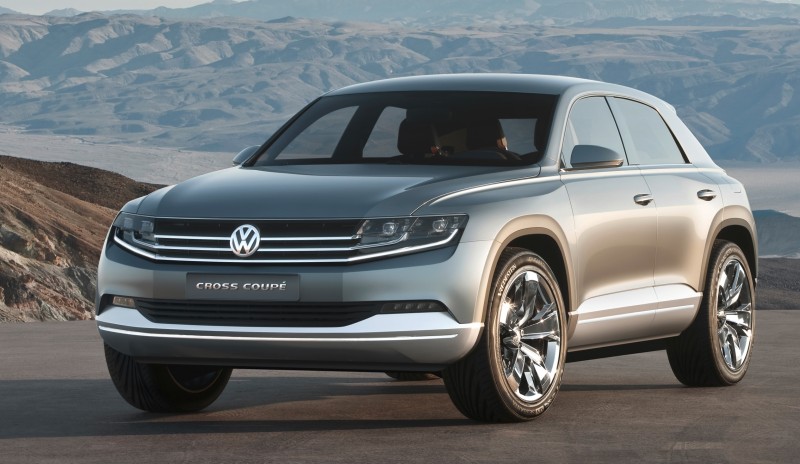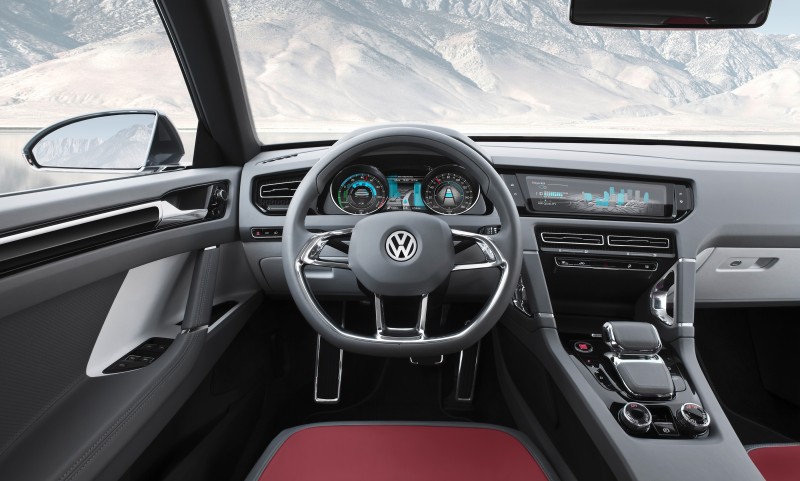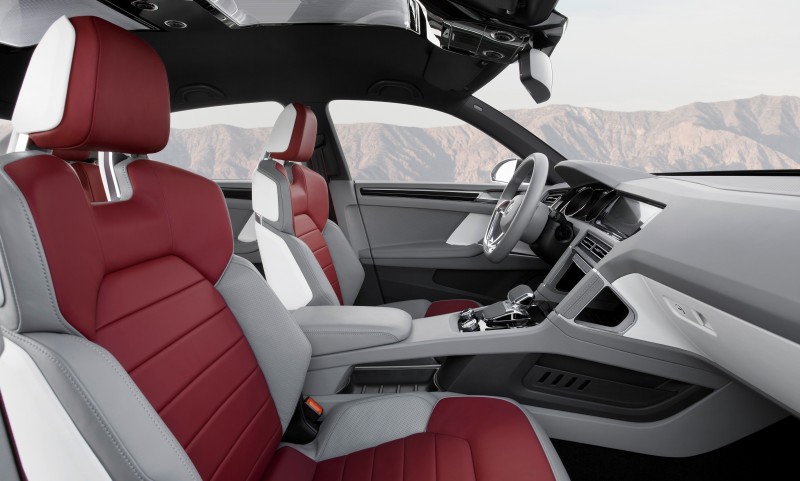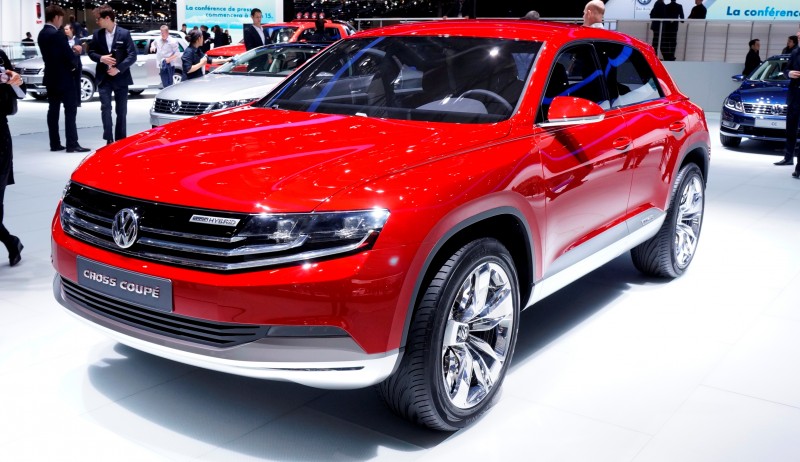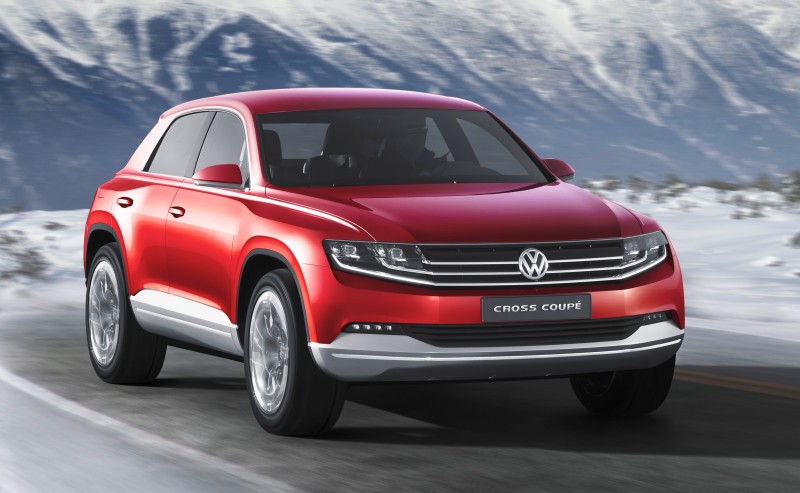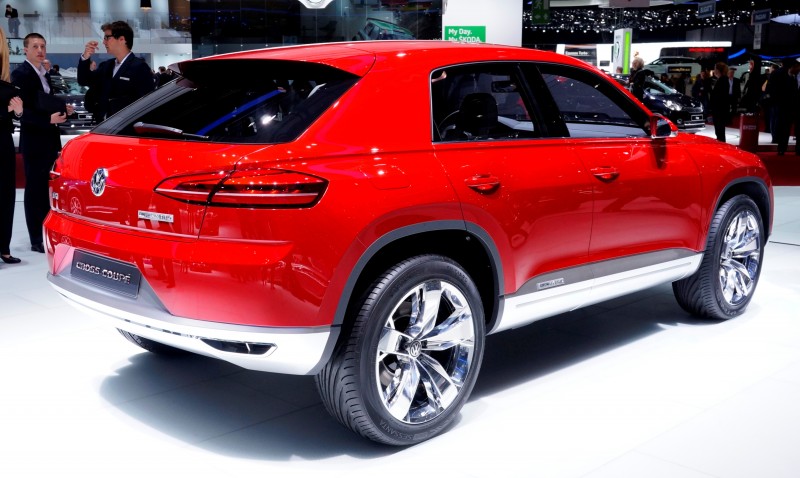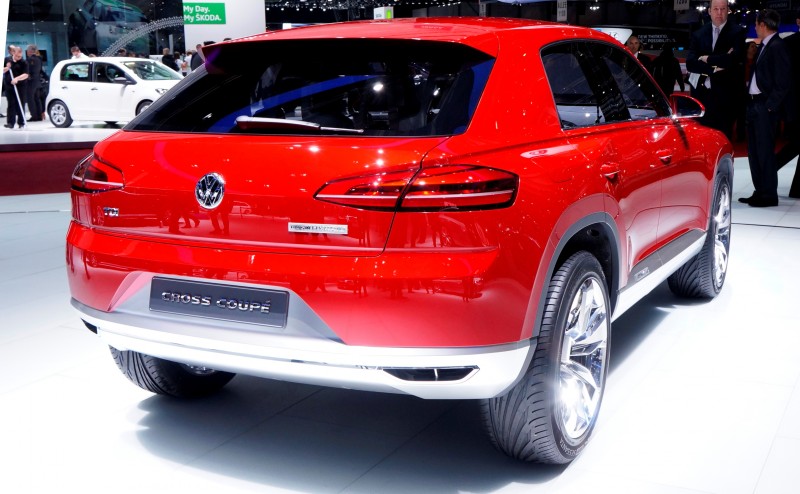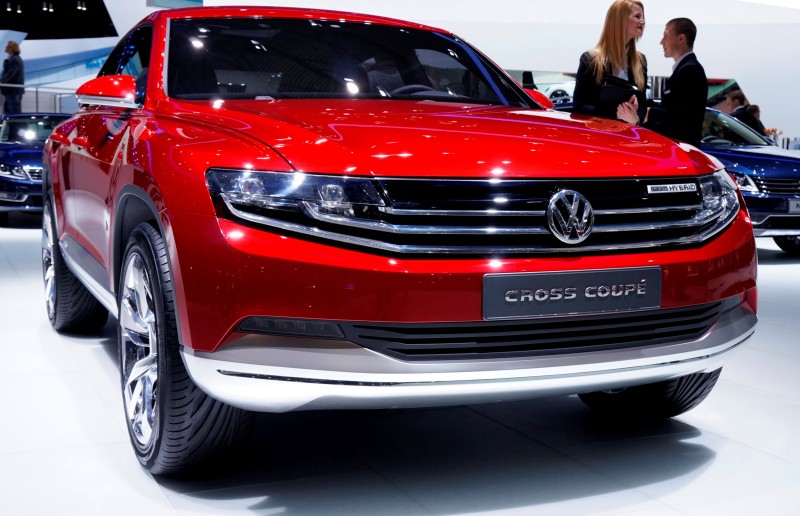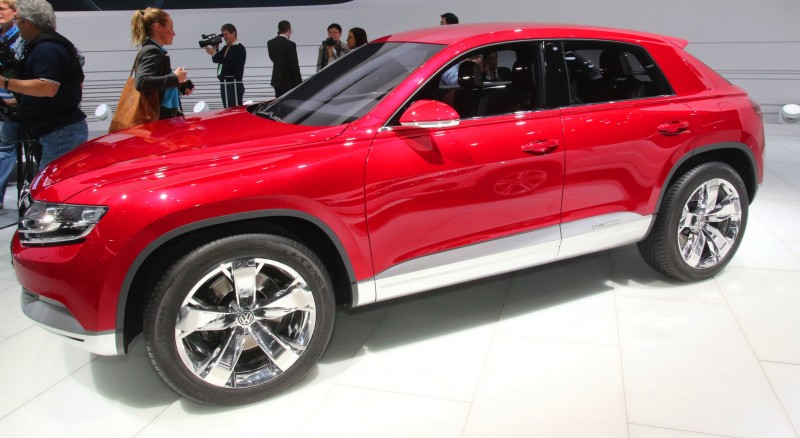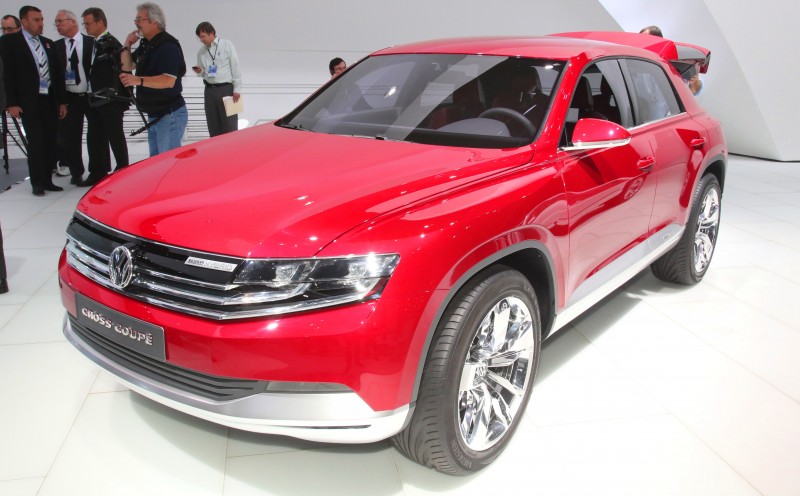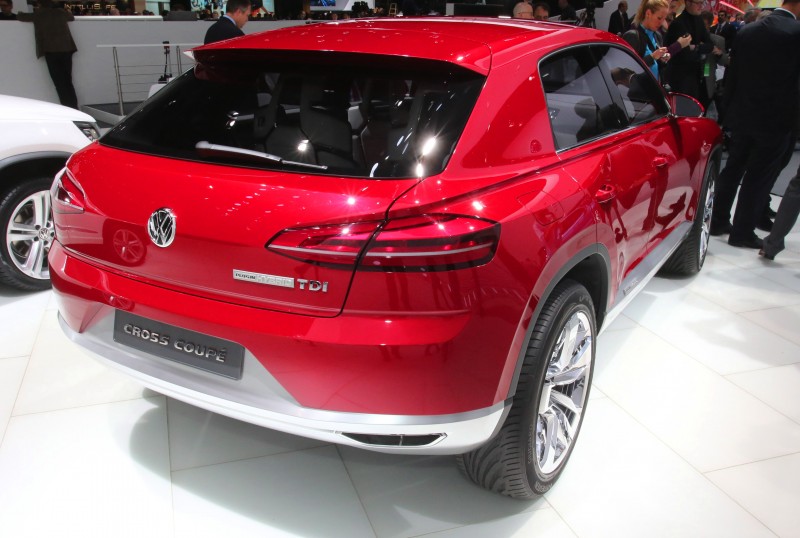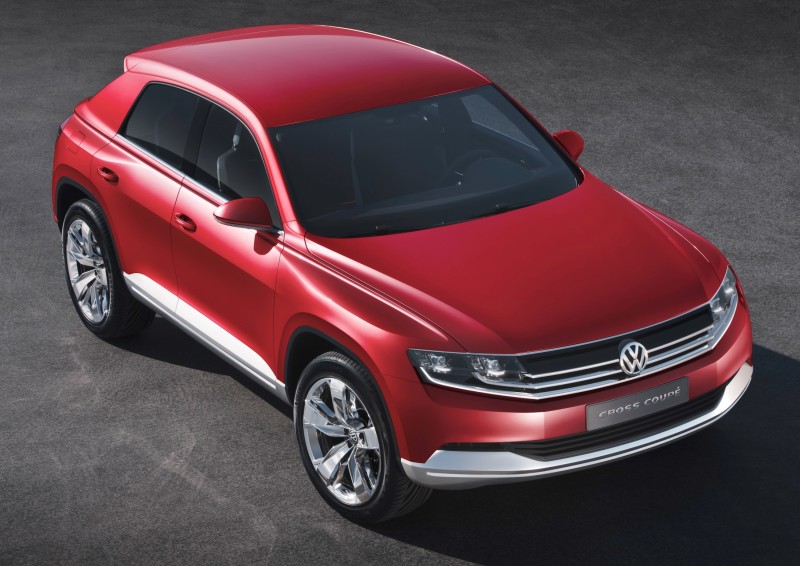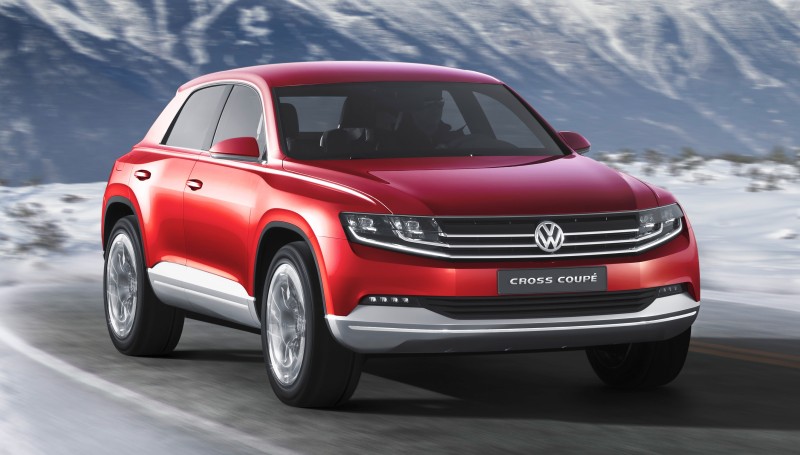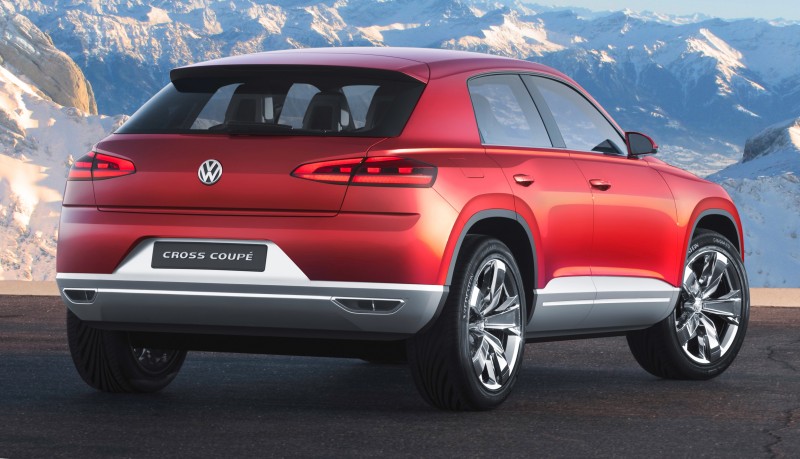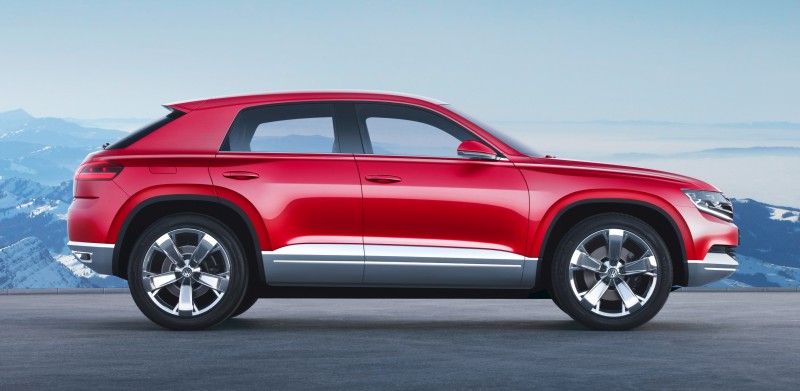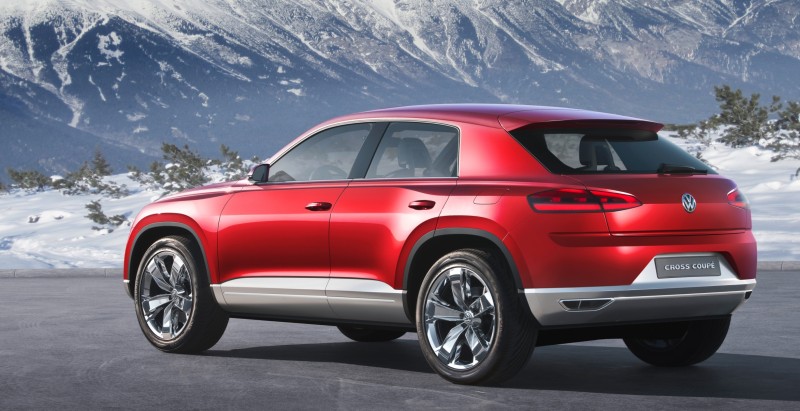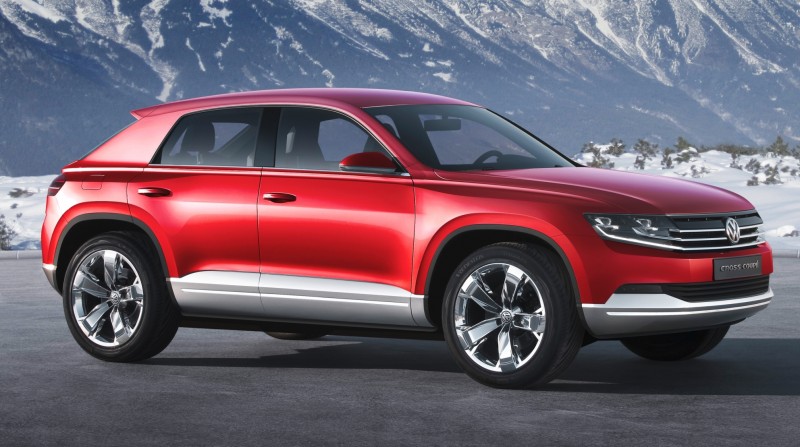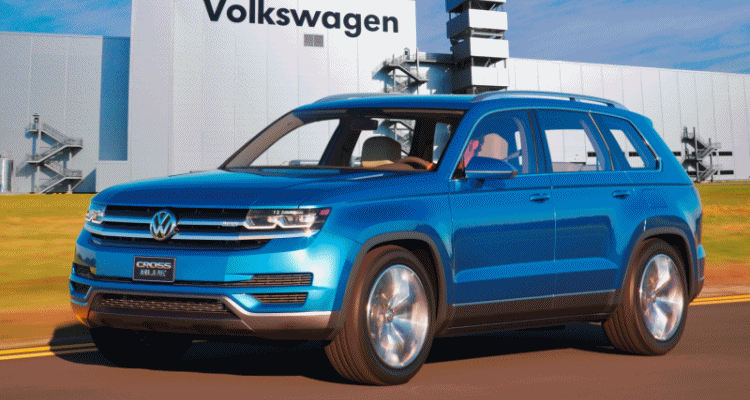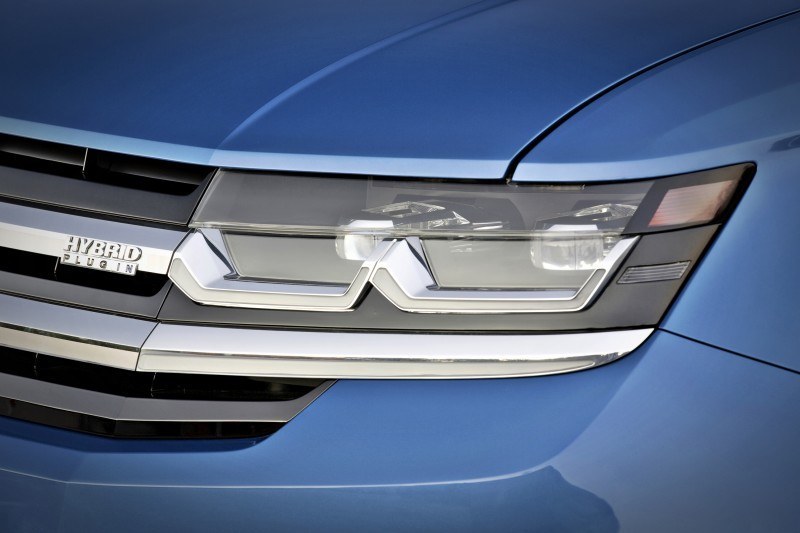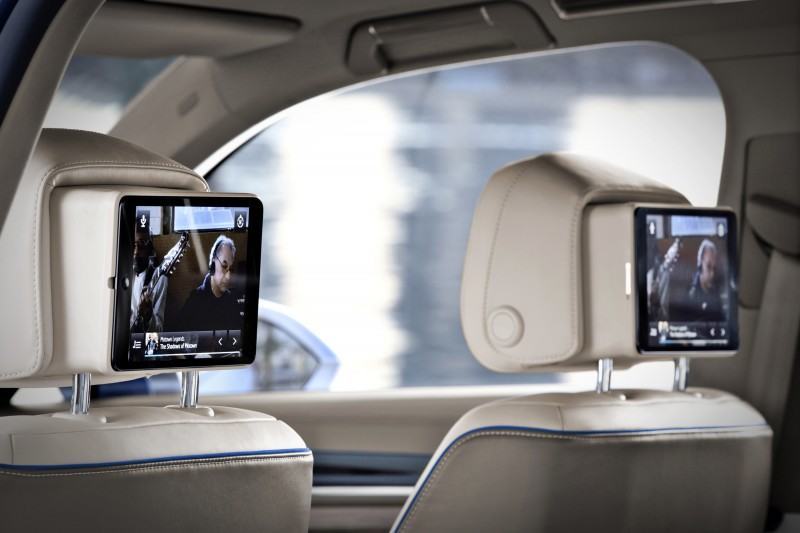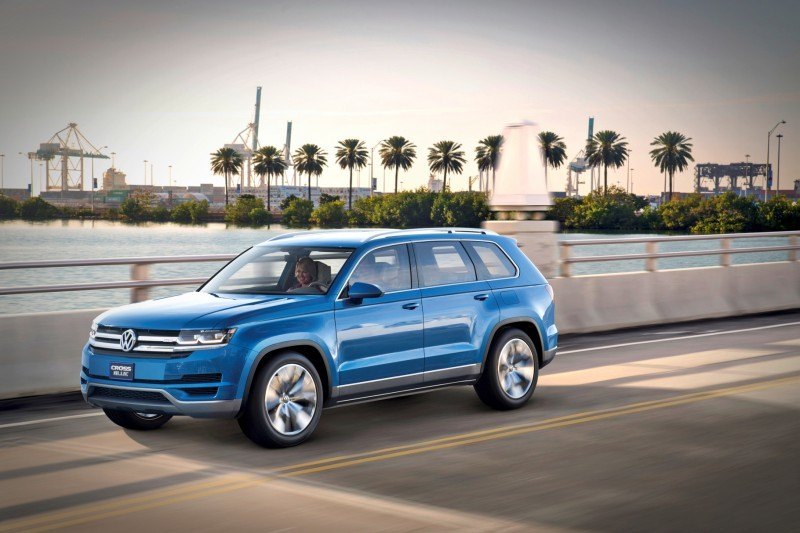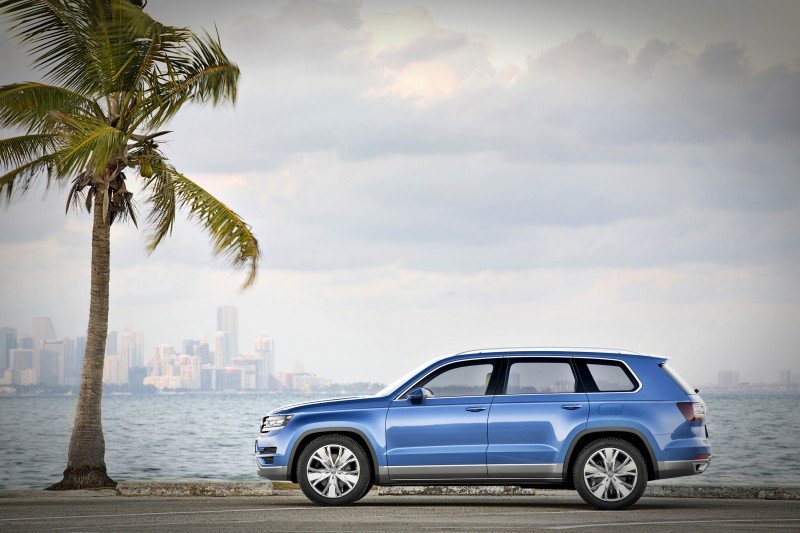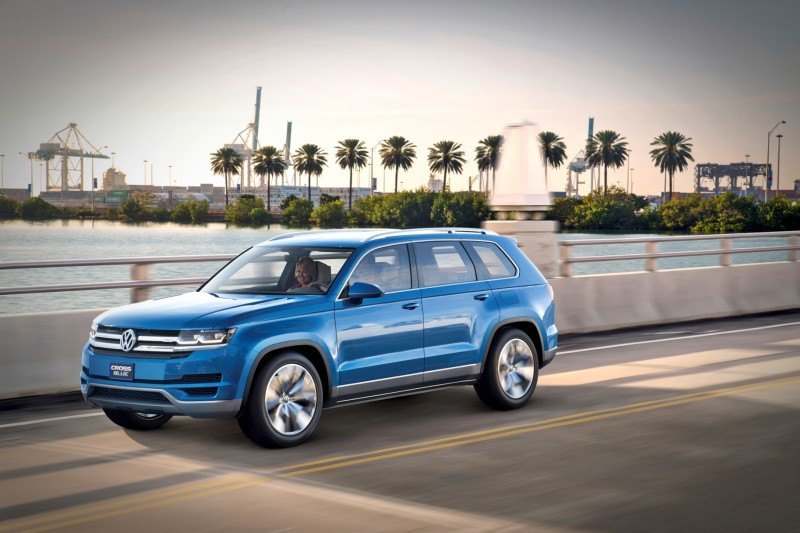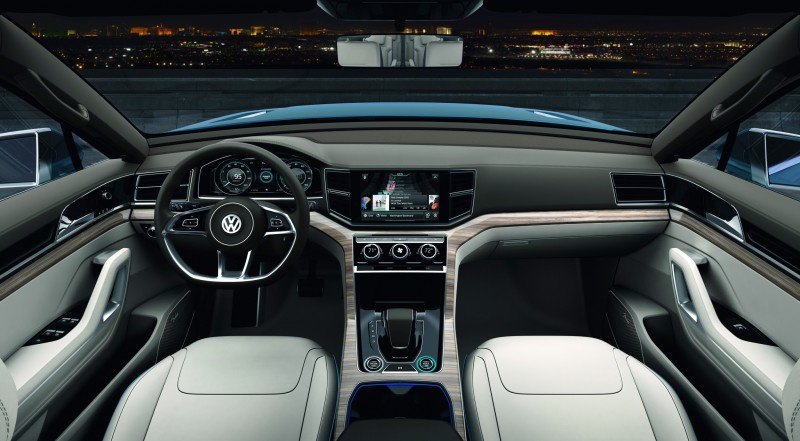Volkswagen has been flirting with an expanded large SUV line for more than five years, with this 2011 Cross Coupe concept a sportier Touareg variant.
Since then, we have seen the CrossBlue Concept and the CrossBlue Coupe Concept, but both are believed to carry underpinnings from the US-market Passat. This extra-wide machine is clearly from another family altogether — despite its quoted MQB (Golf) underpinnings.
VW CrossBlue concept
VW CrossBlue Coupe concept

The look of the car shown here is quite interesting, but may or may not be en route to production. Volkswagen’s adventures in the Phaeton-land have established a firm price ceiling for the brand in key markets, like the US, where people are already shocked to know the Touareg can pass $50,000 very easily.
A more promising market for this vehicle is China, where VW runs the sales charts and SUVs are recently a low-tax option for the rich thanks to new tax policies.
So will this Infiniti QX70 and BMW X6 competitor see the light of day? We give it odds of 50:50, with the scales tipping in its favor with the future Audi Q6 and forthcoming Mercedes-Benz GLC/MLC likely to debut in calendar 2015.
2011 Volkswagen Cross Coupe SUV Concept
VOLKSWAGEN CROSS COUPÉ MAKES ITS WORLD DEBUT AT THE TOKYO MOTOR SHOW
Compact hybrid crossover SUV mixes style, performance, and efficiency
Wolfsburg/Tokyo – At the Tokyo Motor Show, Volkswagen is revealing the Cross Coupé, a concept SUV that looks towards the future. This all-wheel-drive plug-in hybrid vehicle shows how Volkswagen designers could envision a crossover that’s part four-door coupe, part compact SUV. The design team, led by Walter de Silva and Klaus Bischoff, has created an intriguing study that impressively combines the best of the two worlds. Original, strong in character, and sculptural and dynamic, the Cross Coupé hints at the future of SUV design at Volkswagen.
The sporty Cross Coupé concept is based on Volkswagen’s new modular transverse matrix (MQB)-the first time a vehicle has been shown off this platform. The four-seater SUV is powered by two electric motors and a direct-injection turbocharged gasoline (TSI®) engine. The Cross Coupé can drive a distance of up to 25 miles purely on electric power.
Long wheelbase, short overhangs
The concept car is longer than a VW Golf and shorter than a Tiguan at 171.1 inches overall. At 73.5 inches wide and 60.0 inches high, it also falls neatly in between these two bestsellers. The Cross Coupé is thus sized in the globally popular A-segment. With a very long wheelbase of 103.5 inches-two inches longer than a Golf and an inch longer than the Tiguan-compared to its overall length, the Cross Coupé has correspondingly short overhangs: 33.7 and 33.9 inches, respectively, at the front and back. The powerful, muscular proportions are underscored by the wide 62.4-inch front and 63.5-inch rear track dimensions.
The Cross Coupé is still designed to be practical off-road as well as on pavement. The front approach angle, for instance, is 24.2 degrees and the rear departure angle is an impressive 32.5 degrees. The Cross Coupé reinforces its off-road credentials with excellent ground clearance.
Forward Looking Design
The defining features of the Cross Coupé’s styling are the long hood, a completely new frontal aesthetic, the set-back passenger compartment, and the low window line for an SUV. The Cross Coupé looks like it has been milled from a solid block, with extremely precise and modern lines. It also shows the direction in which Volkswagen design is developing.
One striking element is a shoulder line-the tornado line-that looks as if it has been cut with a razor blade. This runs just below the frameless windows, extending from the front to the rear fenders. The decidedly flared fenders create a very powerful stance and produce a silhouette that is reminiscent of a sports car, allied with the robustness of an SUV. The 20-inch alloy wheels, equipped with 265/45-section tires, enhance the sporty look. At the rear, a voluminous coupe-like C-post rises up over the wheelarches.
Radical Front Lights: The potential of the Volkswagen design DNA developed by Walter de Silva (Group Chief Designer) and Klaus Bischoff (Volkswagen Chief Designer) is shown in the concept car’s front section. In this instance, the characteristic horizontal lines of the “Volkswagen visage” become a link between present and future. Unlike today’s models, the designers have physically merged the twin bi-xenon headlamps with the radiator grille’s chrome-plated fins. Two chrome bars that ascend to the sides of the vehicle and link the headlamps are part of an entirely new lighting concept; the lower of the two chrome fins contains the Daytime Running Lights and the fin above it incorporates the turn signals.
The center of the bumper has an area painted in the vehicle’s color: a precisely shaped character line extends upwards to form a homogenous unit with the bars of the radiator grille. Right at the bottom of the bumper is another air intake, which is fitted with two additional smaller chrome bars. To the left and right of each inlet are the LED foglights.
Coupe-style roofline: The shallow line of the side windows also influences the rear of the car. The steeply raked rear window is typical of a coupe. The rear edge of the hatchback is finished off by a spoiler, which optically extends the roof surface and also optimizes the aerodynamics. The rear light clusters are kept slim and, in similar fashion to their counterparts on the latest production models such as the new CC, they feature a delicate, pale, horizontal bar that makes them look very elegant. The chunky rear bumper is, however, typical of an SUV and features integrated exhaust pipes on either side.
The Best of Both Worlds
Inside, the worlds of the SUV and the coupe form an exciting alliance. This four-seater has a significantly sportier design than conventional SUVs. For example, the dashboard has the precise lines of a coupe’s, yet is raised up like an SUV’s. The surface of the dashboard exudes a very refined quality, yet is also very robust. This robustness is also a feature of the controls and touch points inside the vehicle: for instance, the stability control systems and driving modes are controlled via two aluminum-alloy rotary switches, with the button for the electric parking brake located between them. The strikingly wide shift lever for the seven-speed dual-clutch automatic (DSG®) transmission is also made of aluminum: as well as providing some visual fun, it also is pleasing to the touch. Two robust but elegant grab handles are a feature of the center stack, which also incorporates the HVAC controls and air vents, and a touchscreen display that monitors all relevant vehicle functions, from on- and off-road navigation to the sound system.
Programmable instruments: Arranged behind the three-spoke steering wheel is a user-programmable instrument cluster. The driving mode’s rotary control knob can be used to select between “Sport,” “City,” and “Offroad.” The screen display varies according to the mode selected: for instance, “Offroad” mode features a compass and a topographic map. Each of the three modes has a customized screen layout and different color scheme. Positioned centrally between the twin round dials is another multifunction color display that shows vehicle information, the phone menu, audio details, and additional navigational information.
Designed for long journeys. The Cross Coupé is fitted with four individual bucket seats that have solidly integrated headrests. The four passengers have ample leg-, head- and shoulder-room. The backs of the rear seats and the front passenger’s seat can be folded fully forwards to accommodate bulky items such as surfboards and bicycles. The seat backs have an outer synthetic covering so that they form a durable surface for such loads when they are folded down. There’s 13.4 cubic feet of trunk space behind the rear seats, which expands to 43.4 cubic feet with the rear seats folded.
Innovative Hybrid Powertrain
The Cross Coupé has not one but three power sources, which work together efficiently as a hybrid system. Underhood, there’s a 148-horsepower (110 kW) TSI engine that delivers 155 pound-feet of torque as well as an electric motor that makes 54 hp (40 kW) and 133 lb-ft. Together or individually these two motors power the front axle. If the Cross Coupé is to be used in all-wheel-drive or pure electric mode, a further electric motor that is integrated as a co-axial drive unit in the back axle powers the rear wheels. This second electric motor generates up to 114 hp (85 kW) and develops 199 lb-ft of torque. The overall output of the system (gasoline engine and electric motors) is a maximum of 262 hp (195 kW).
Because the battery is mounted low, inside where a conventional driveshaft would run in the “transmission tunnel,” the vehicle has a low center of gravity. Combined with the balanced layout of the power sources, the concept has the dynamic handling of a coupe while retaining the functionality of an SUV.
Electric Avenue: When the vehicle is being driven purely on electric power, the motors receive their current from an eight-module 9.8 kWh lithium-ion battery. An electronic power control module, operating at around 370 volts and integrated into the engine compartment, manages the flow of high-voltage energy to and from the battery and the electric motors. Meanwhile, the Cross Coupé’s low-voltage electrical system is supplied with the necessary 12 volts through a DC/DC converter. The battery is charged either via 230-volt external sources or-when in motion-via the TSI engine and front- and rear-axle regeneration.
Highly Efficient: With a full tank of fuel the Cross Coupé weighs 3854 pounds, distributed 58 percent front and 42 percent rear. The payload is 992 pounds.
In purely electric mode, the vehicle can be driven up to 25 miles, emissions free. In the New European Driving Cycle (NEDC), the fuel consumption is 87 mpg (2.7 liters/100 km), equating to CO2 emissions of just 62 g/km. With a 14.5-gallon fuel tank, the theoretical range in hybrid mode is 506 miles: add in the electric range, and the Cross Coupé can do 531 miles without stopping for fuel.

Sustainable and Sporty: Despite the focus on sustainability, the concept car is still sporty. The Cross Coupé accelerates from 0 to 62 mph in just 7.0 seconds and has a top speed of 125 mph. In electric-only mode, the top speed is governed to 75 mph. Both the gas mileage and driving performance are positively influenced by the Cross Coupé’s excellent aerodynamics and low overall height (for an SUV), with an overall drag coefficient of just 0.329.
How the hybrid drive system works: Both electric motors help (boost) the gasoline engine (TSI) during acceleration. As mentioned above, however, they can also power the concept car on its own for a distance of up to 25 miles, depending on conditions. In this instance, by opening the clutch, the TSI is disconnected from the drivetrain and switched off. The clutch on the gearbox side, however, remains closed and the seven-speed DSG thus remains connected.
Cross Coupé drivers can also choose to drive relatively long distances on pure electric power (as long as the battery has enough charge). To do so the driver simply presses the relevant driving mode button on the centre console next to the shift lever. As soon as the TSI needs to be brought back into play due to the battery’s level of charge or any other parameters, the engine starts up-almost imperceptibly for driver and passengers-and smoothly engages with the drivetrain.
Charging at the press of a button: Whenever the Cross Coupé’s brakes are applied, both electric motors act as generators, utilizing the braking energy to charge the battery (regeneration). The driver can (via another button next to the shift lever) also consciously charge the battery from the TSI engine-for instance, in order to have sufficient electric power to drive later in a regulated zone that’s preserved exclusively for zero-emission electric vehicles. At all times, the current electric range and the Cross Coupé’s overall range are displayed on the instrument panel.
Multi-mode Drivetrain: Based on the amount of drive (for instance, loss of traction on the front axle) or through the driver consciously switching to all-wheel or electric mode, the rear electric motor engages in an instant. In general there are three driving modes available to the driver: City (eco-mode with minimal fuel consumption); Sport (dynamic driving); and Offroad (permanent all-wheel drive).
About Volkswagen of America, Inc.
Founded in 1955, Volkswagen of America, Inc. is headquartered in Herndon, Virginia. It is a subsidiary of Volkswagen AG, headquartered in Wolfsburg, Germany. Volkswagen’s operations in the United States include research and development, parts and vehicle processing, parts distribution centers, sales, marketing and service offices, financial service centers, and its state-of-the-art manufacturing facility in Chattanooga, Tennessee.
Volkswagen is one of the world’s largest producers of passenger cars and Europe’s largest automaker. Volkswagen sells the Beetle, Eos, Golf, GTI, Jetta, Jetta SportWagen, Passat, CC, Tiguan, Touareg and Routan vehicles through approximately 600 independent U.S. dealers. All 2012 Volkswagen models come standard-equipped with Electronic Stability Control. This is important because the National Highway Traffic Safety Administration (NHTSA) has called ESC the most effective new vehicle safety technology since the safety belt. Visit Volkswagen of America online at www.vw.com or media.vw.com to learn more.

Tom Burkart is the founder and managing editor of Car-Revs-Daily.com, an innovative and rapidly-expanding automotive news magazine.
He holds a Journalism JBA degree from the University of Wisconsin – Madison. Tom currently resides in Charleston, South Carolina with his two amazing dogs, Drake and Tank.
Mr. Burkart is available for all questions and concerns by email Tom(at)car-revs-daily.com.

